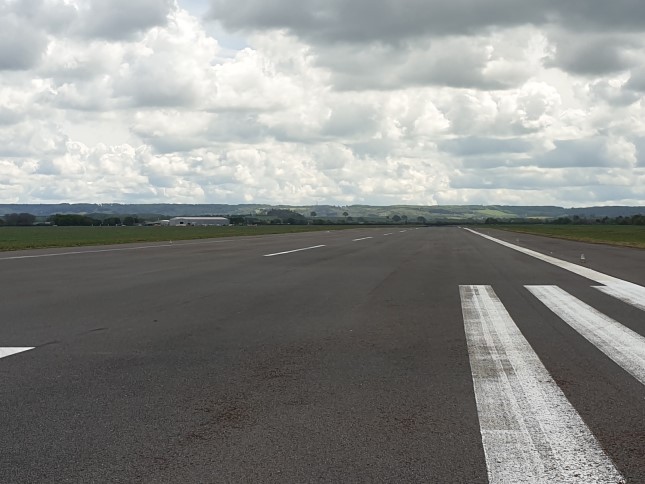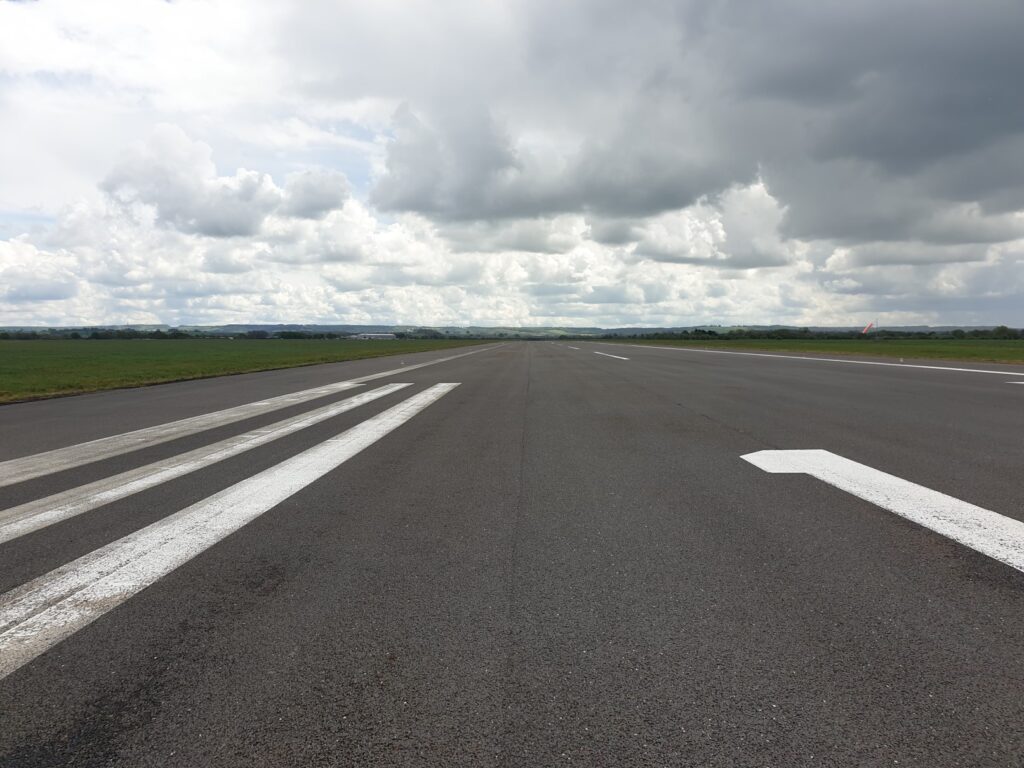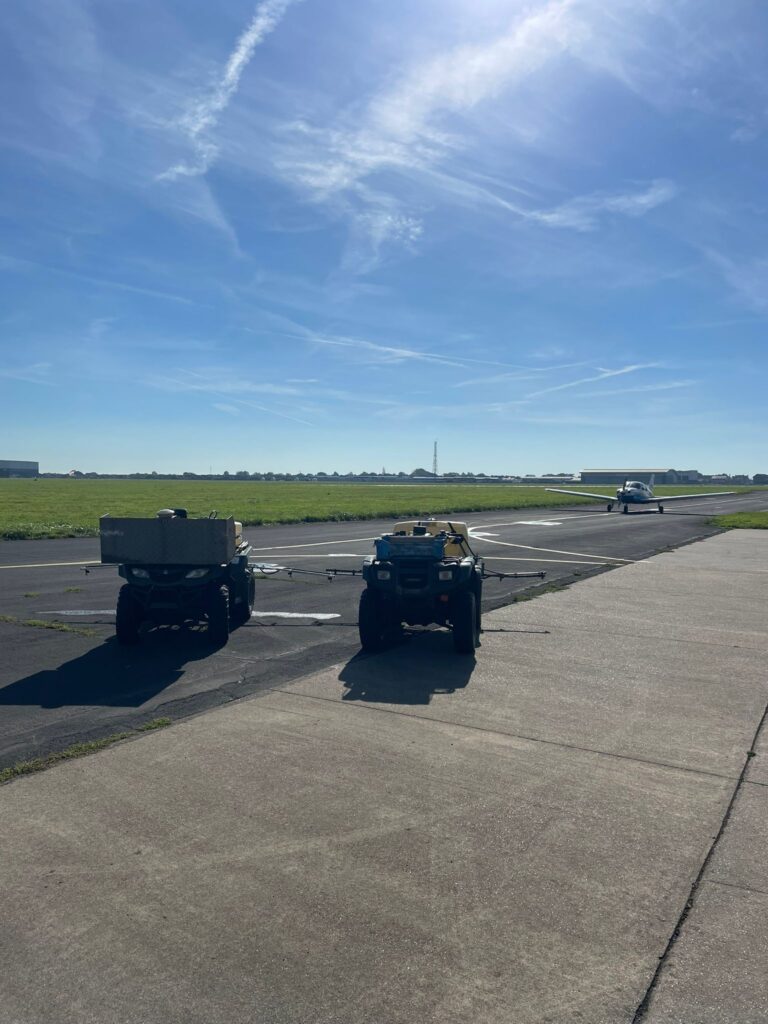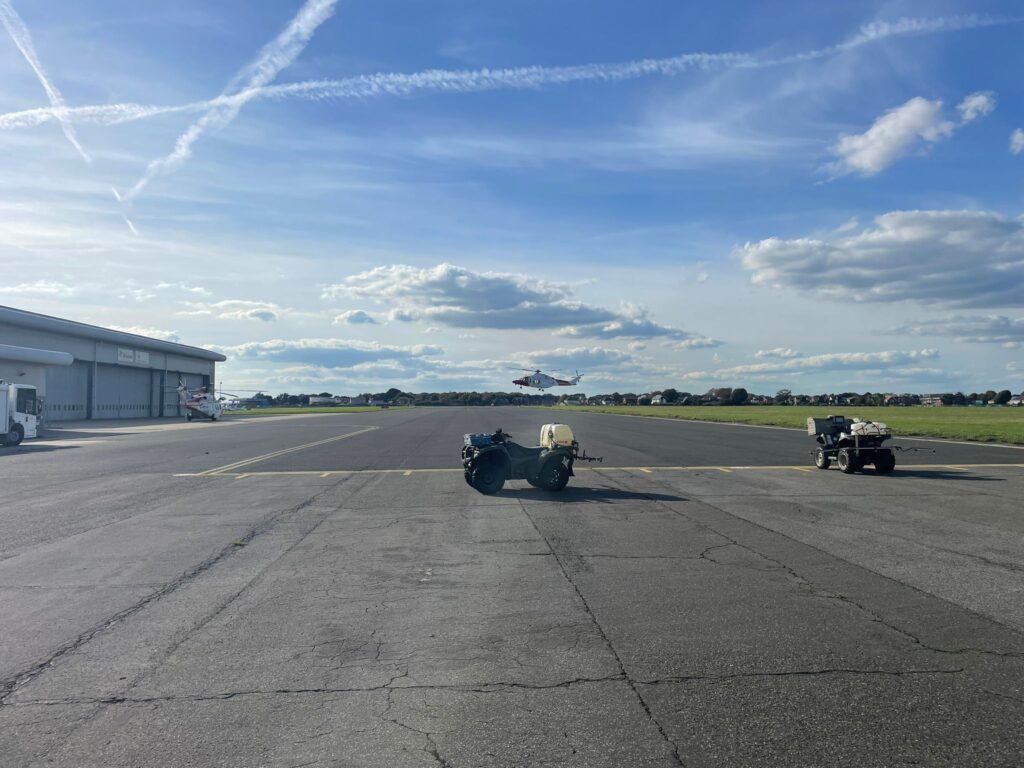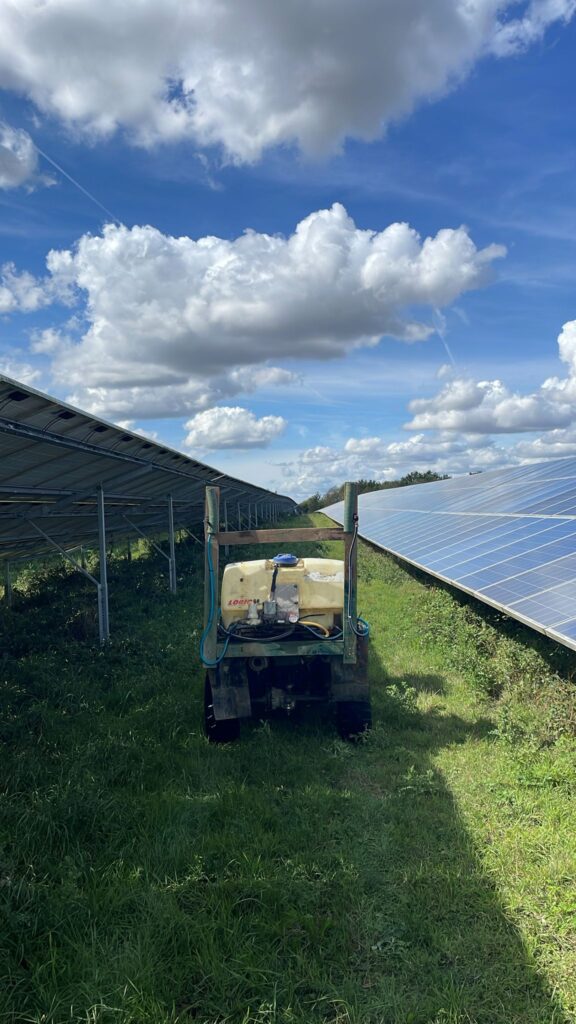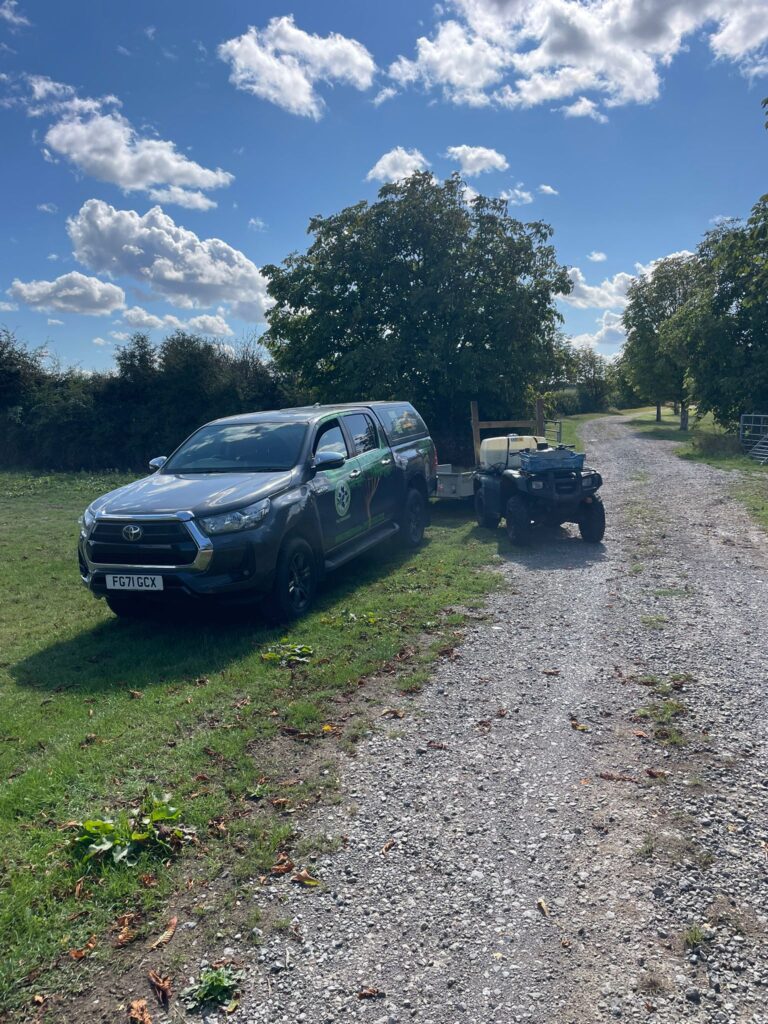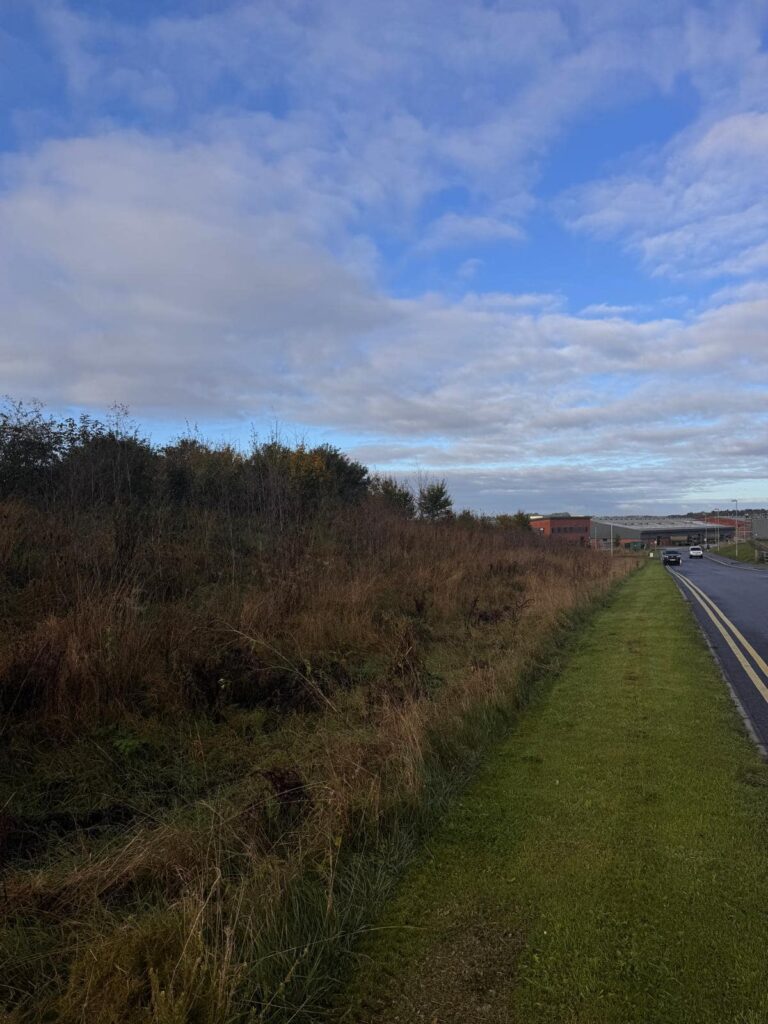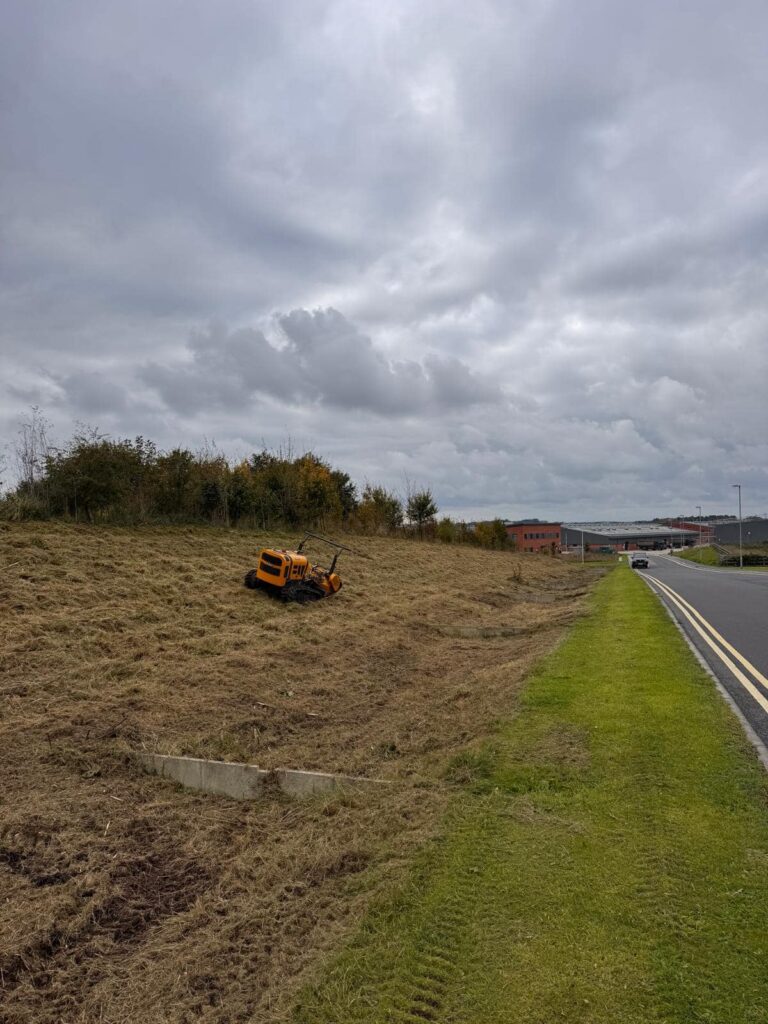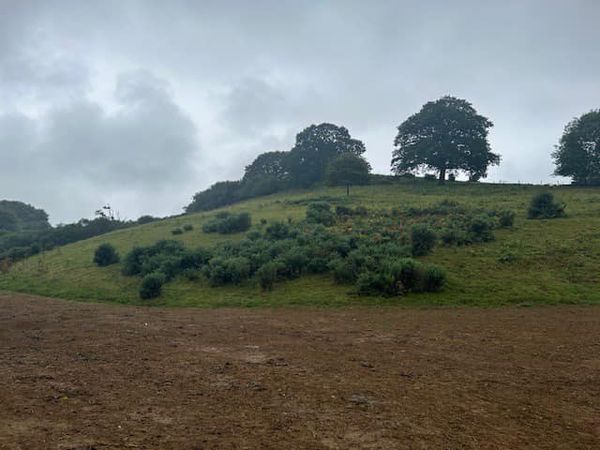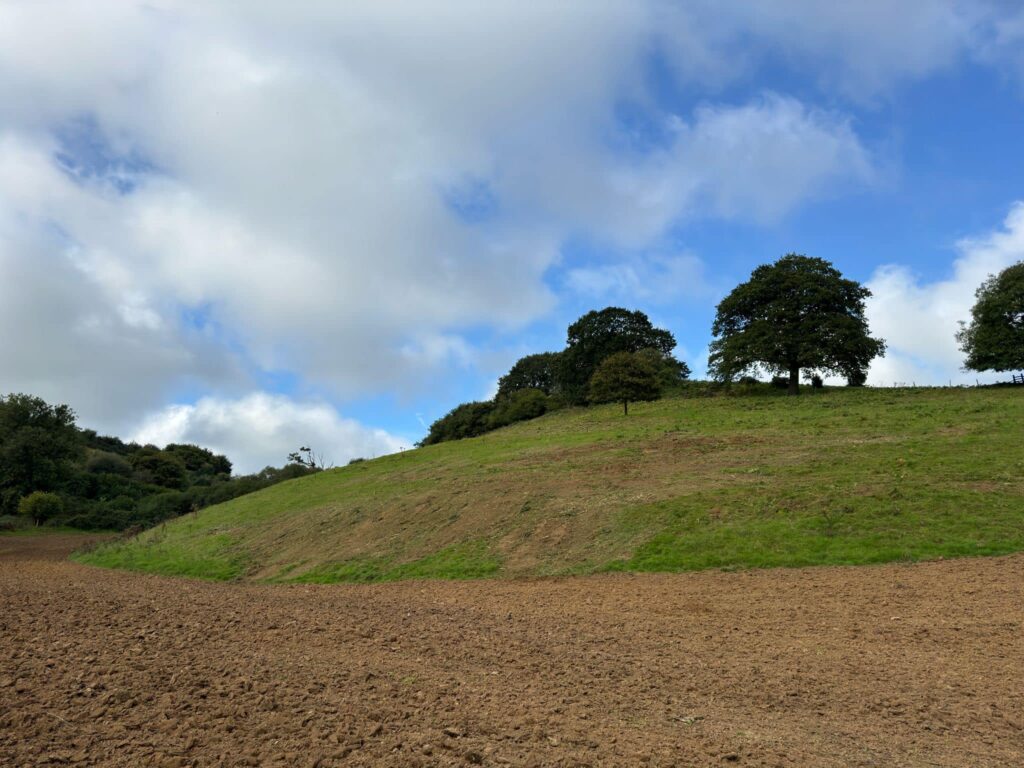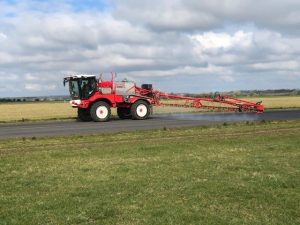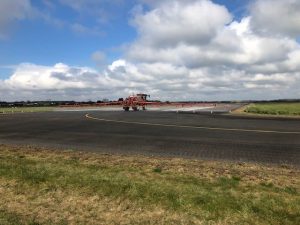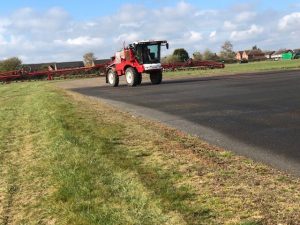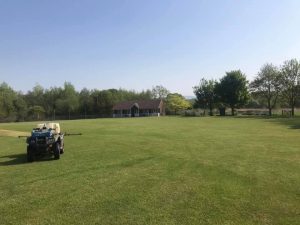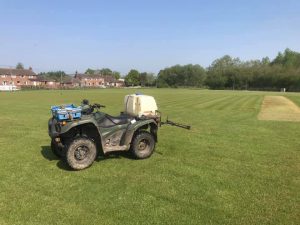Nice day on the South Coast towards the end of September to carry out weed control at Lee on Solent Airport.
No Spitfires this time; however, the helicopters created enough of a breeze!
Check out our previous visit (with Spitfire) back in April
Category: Weed Control
Spraying brambles under solar panels
Runway clearing at Lee-on-Solent
Runway clearing at Lee-on-Solent
Early start for Tad this week to get weeds treated at Lee-on-Solent in Hampshire before the runway opens.
Nice visit from an iconic bird! Part of a Victory Festival & Air Display at featuring vintage aircraft, and other events.
For full info on our weed control services, please visit this link
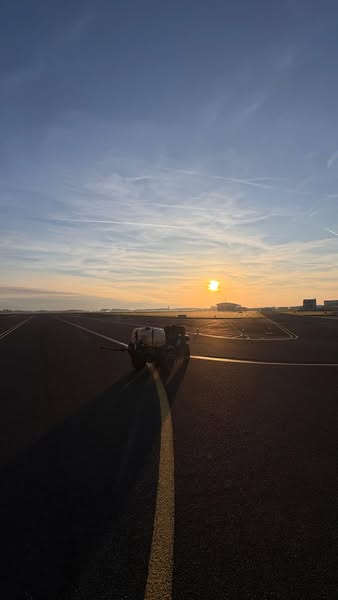
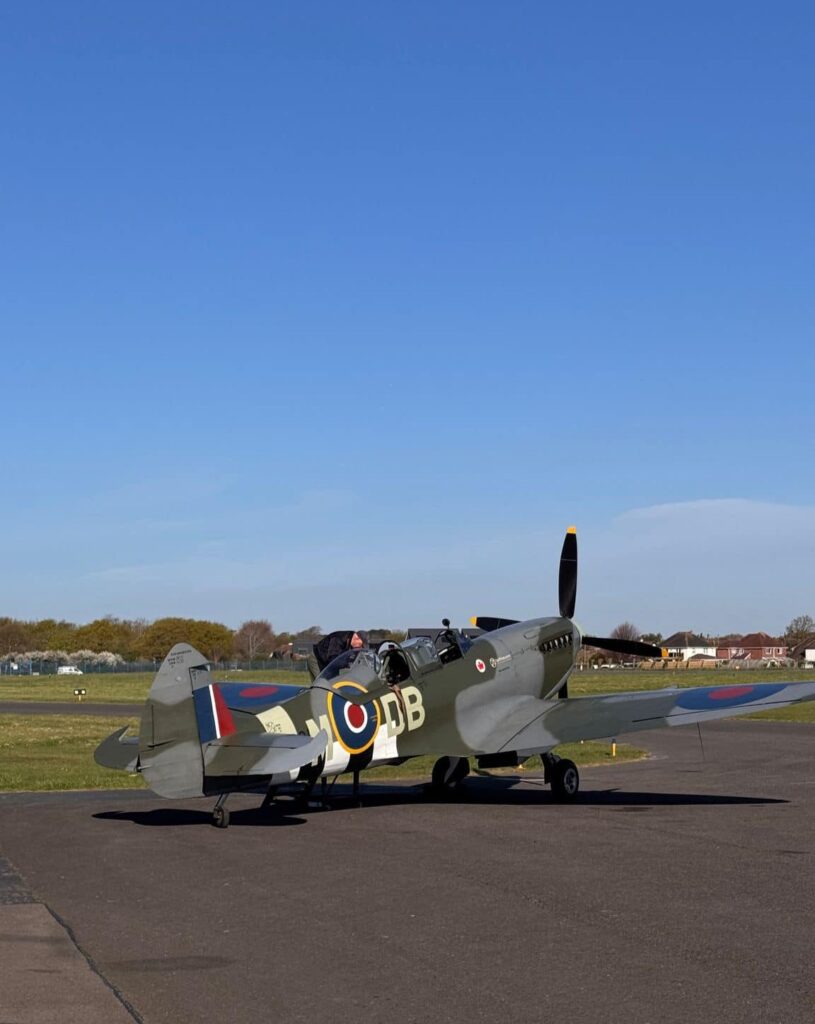
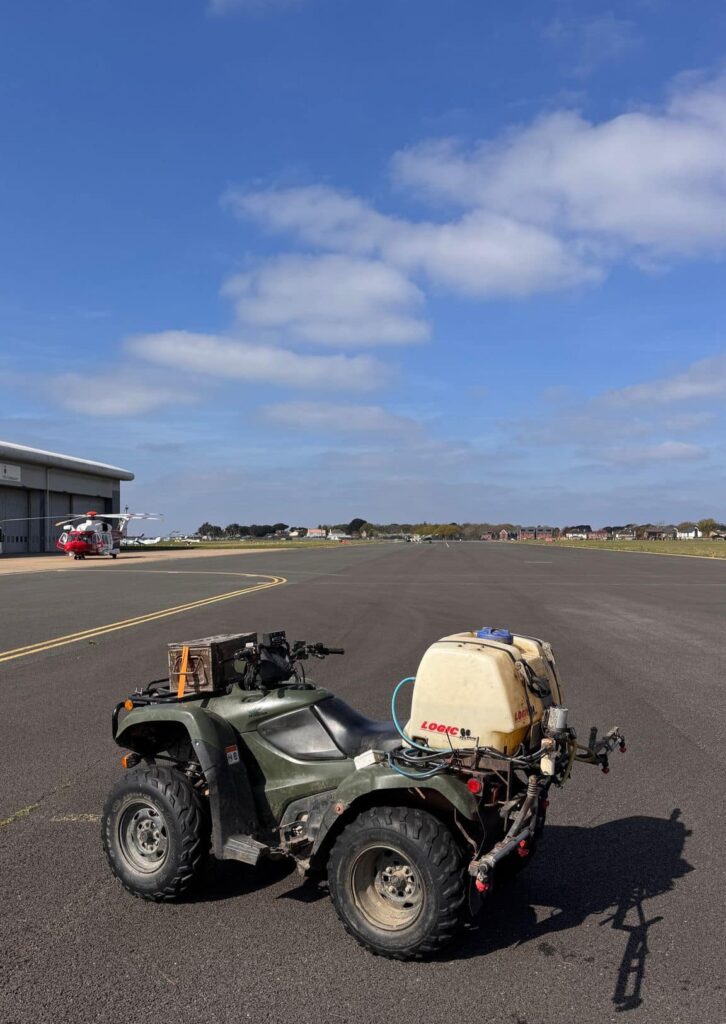
Robo fail clearing – before and after
This project is part of a programme to control Hemlock, which will be treated next spring to prevent re-growth.
From The Wildlife Trusts website: “A poisonous plant, hemlock has a repellent smell when its leaves are crushed, helping to ensure that accidental poisonings don’t occur very often – even livestock studiously avoid it. This biennial plant prefers damp places and can grow in huge colonies on waste ground, riverbanks and ditches, but can also be seen along roadside verges. It produces umbels (umbrella-like clusters) of white flowers in June and July”.
Gorse control with the Robo flail
Before and after pictures of some gorse control today just outside Yeovil with the Robo flail.
The gradient was approx. 45˚ and the area in the photograph took a morning’s work to clear.
For more details of our Roboflail please see here.
16 Sept 2024
Weed Control
Tad has been treating weeds on a few sports pitches this week when the weather has allowed. The quad and sprayer does not leave any tyre marks on those cricket squares.
24th July
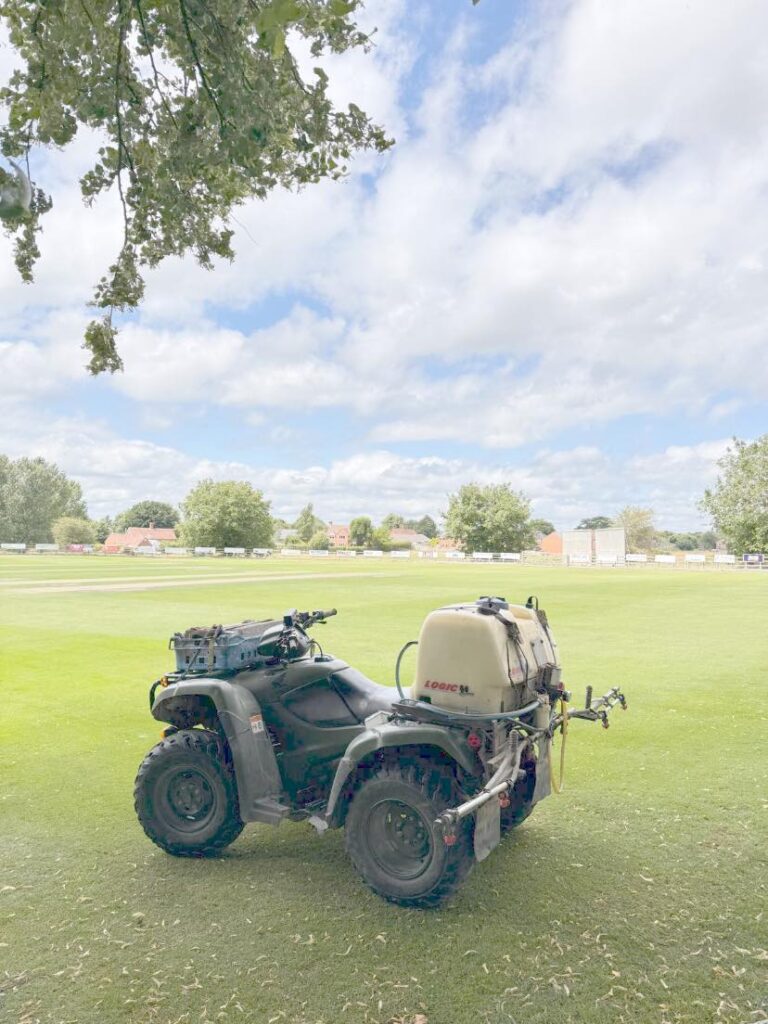
Spraying 100,000 newly planted trees across Wiltshire and Hampshire April 2024
Tad has been busy during the settled weather last week spraying over 100, 000 newly planted trees across Wiltshire and Hampshire to control the weeds to ensure they have the best possible start.
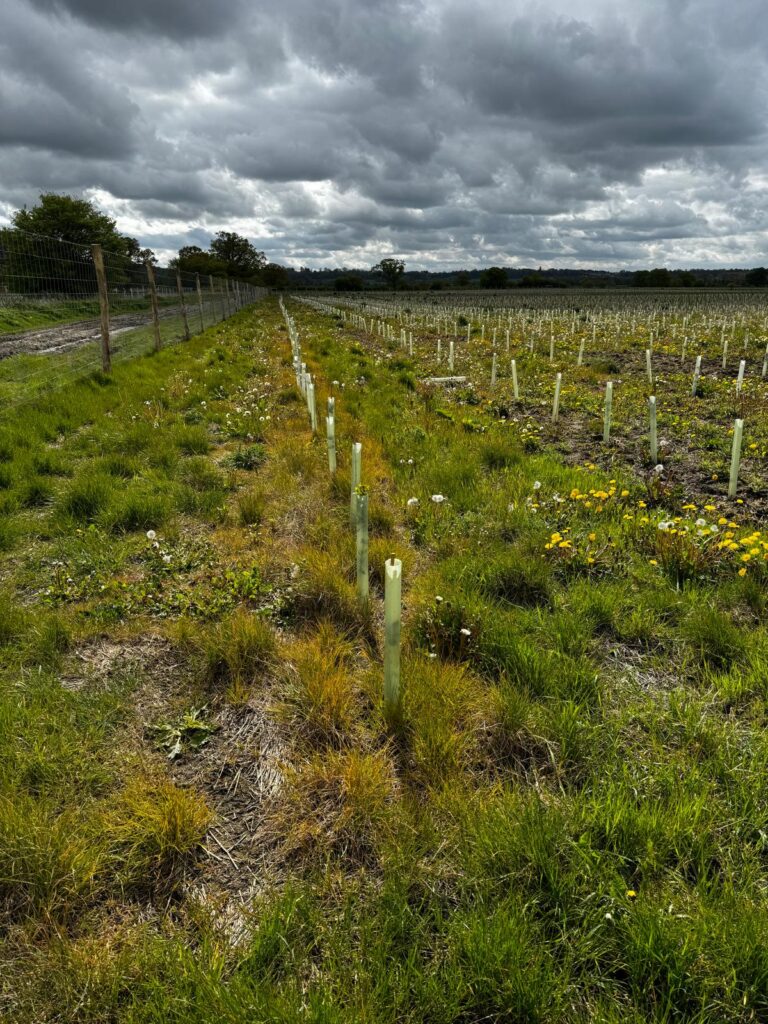
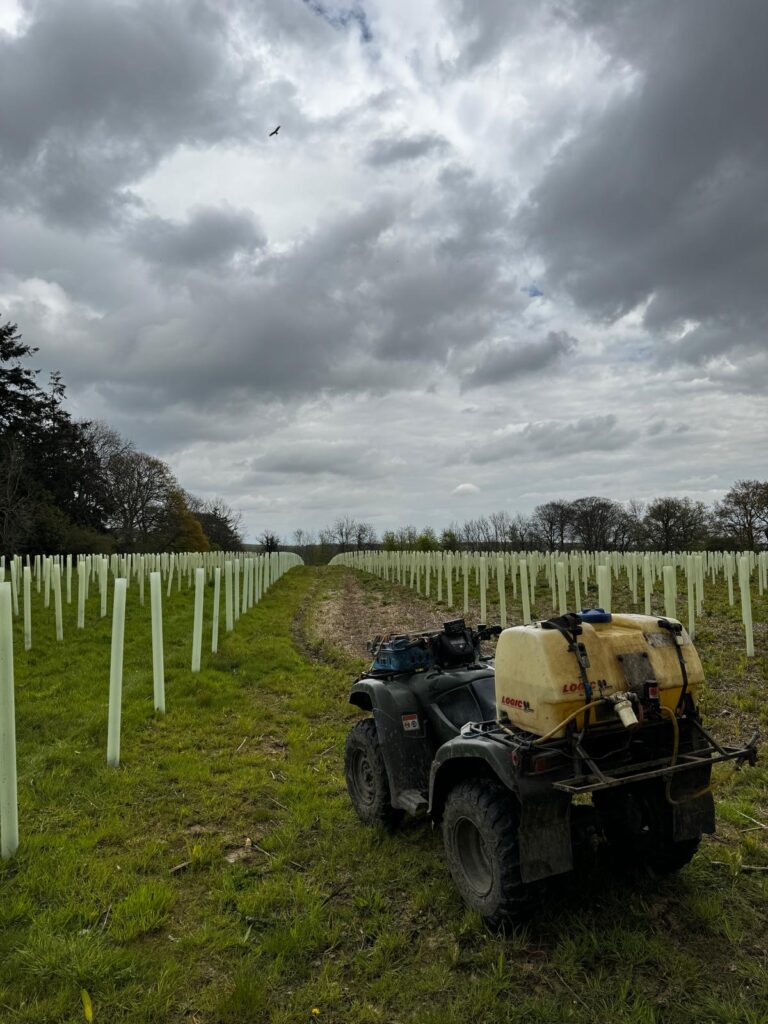
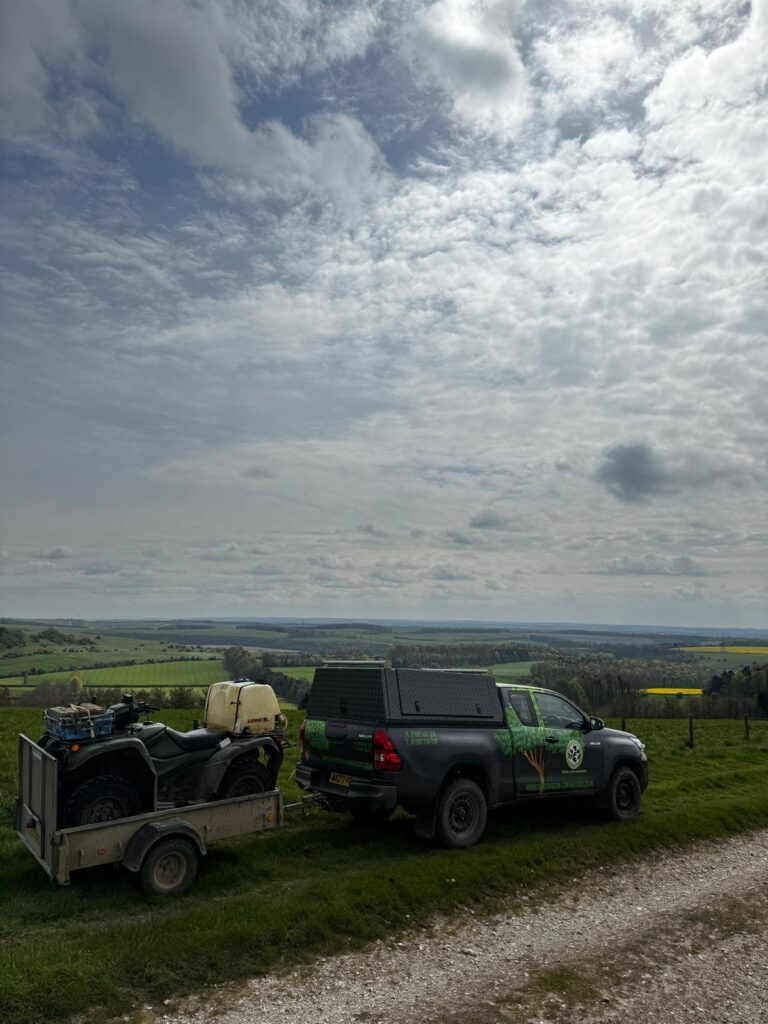
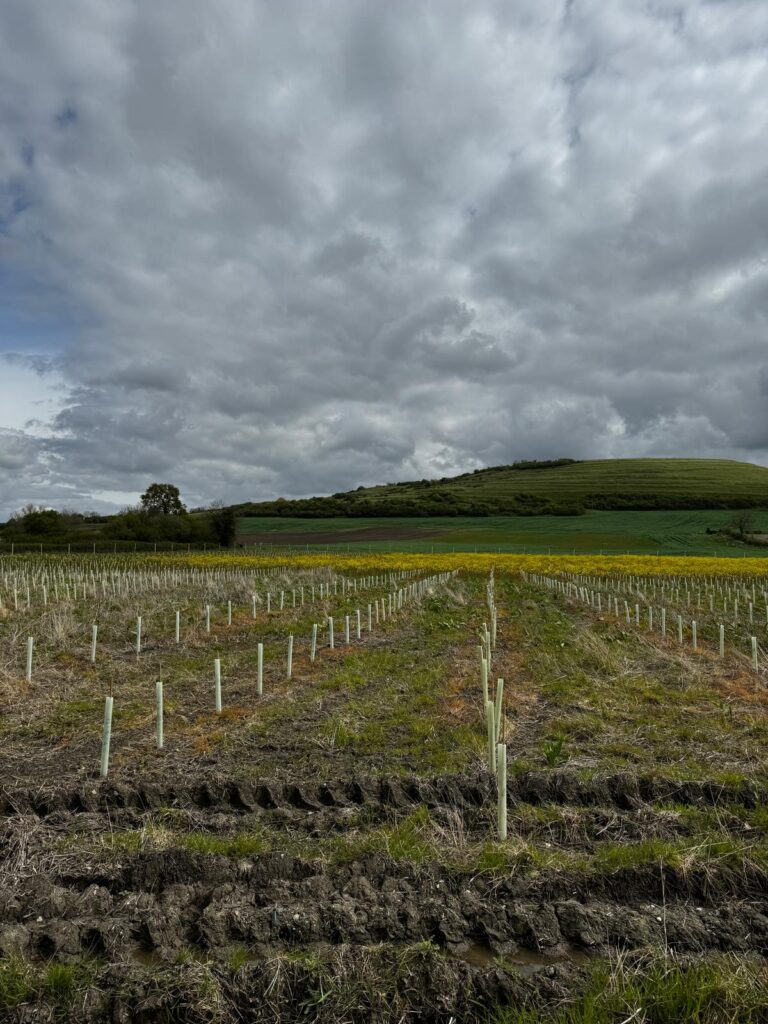
Unwelcome invasive species to our landscape
You may have heard William Warden speaking early this morning (Wed 28 June) on BBC Radio Wiltshire about Giant Hogweed.
Some background on this plant from the Wiltshire Wildlife Trust: “Giant hogweed is an invasive weed of riverbanks, where it prevents native species from growing. It was introduced into the UK by the Victorians as an ornamental plant for lakesides and gardens. It escaped into the wider countryside and gained notoriety in the 1970s as an alien species that favours damp spots like riverbanks. At this time, many children started to display blisters as a result of touching the plant’s sap while using the stems to make pea-shooters or telescopes: sunlight makes the skin sensitive to the irritants in the plant, causing the skin to redden. Today, it is widely acknowledged that neither gardeners nor conservationists should attempt to cut the plant down (exposing its sap) as its toxins can cause serious, recurring skin damage”.
For images and more information please see the link here
Other invasive species include Himalayan Balsam – also an invasive weed of riverbanks and ditches, where it prevents native species from growing.
and Japanese Knotweed – an invasive non-native plant of many riverbanks, waste grounds, and roadside verges, where it prevents native species from growing.
Different rules apply about planting or “causing these plants to grow in the wild”, so do check this out carefully.
Moss treatment on Chalgrove Airfield
Moss treatment on Chalgrove Airfield last week to control moss and weeds on the runway.
10 Ha of tarmac treated at 500 litres/Ha – easy with the correct machinery. All works were undertaken early in the morning not to hinder the active runway. Well done Derek!
Chalgrove Airfield is a former World War II aerodrome near Chalgrove, South Oxfordshire
